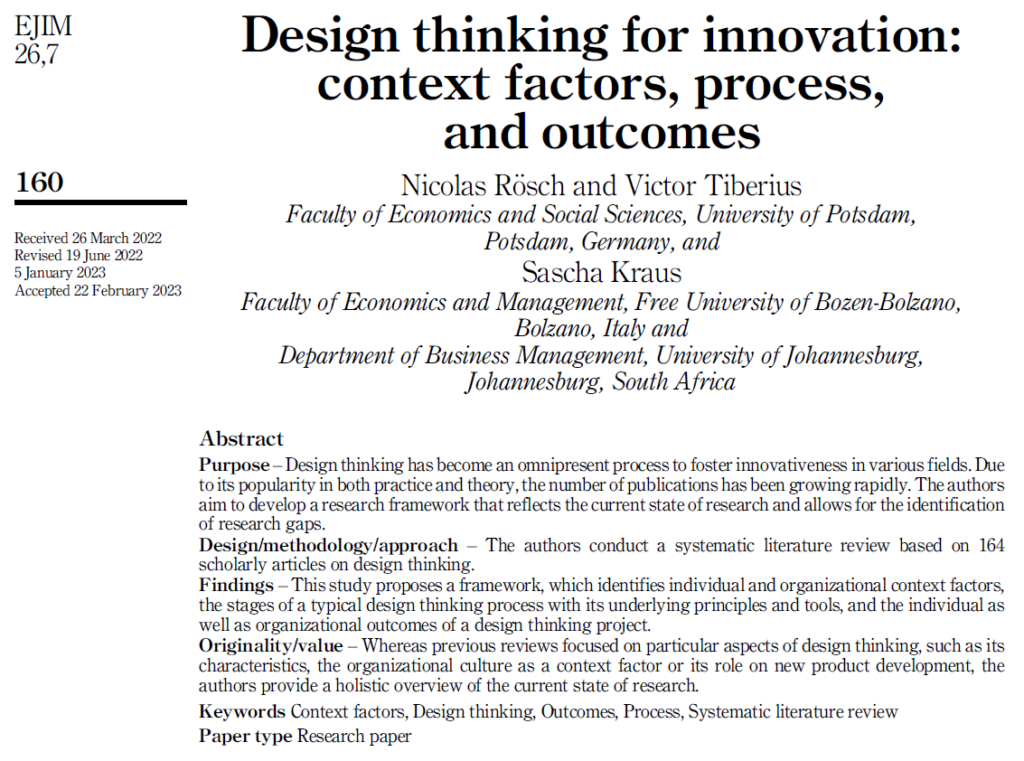Wissenschaft|18. Dezember 2023
Design Thinking
Zusammenfassung:
Purpose: Design thinking has become an omnipresent process to foster innovativeness in various fields. Due to its popularity in both practice and theory, the number of publications has been growing rapidly. The authors aim to develop a research framework that reflects the current state of research and allows for the identification of research gaps.
Design/methodology/approach: The authors conduct a systematic literature review based on 164 scholarly articles on design thinking.
Findings: This study proposes a framework, which identifies individual and organizational context factors, the stages of a typical design thinking process with its underlying principles and tools, and the individual as well as organizational outcomes of a design thinking project.
Originality/value: Whereas previous reviews focused on particular aspects of design thinking, such as its characteristics, the organizational culture as a context factor or its role on new product development, the authors provide a holistic overview of the current state of research.
Quelle:
Rösch, N., Tiberius, V., & Kraus, S. (2023). Designing thinking for innovation: antecedents, process, and outcomes. European Journal of Innovation Management, 26(7), 160-176. doi:10.1108/EJIM-03-2022-0164




